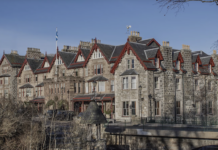Offered for sale by well-known Healey collector and former Swiss Austin-Healey Club President, Bruno Verstraete, the ultra-rare ‘Big Healey’ offered here is one of only 6 BN1s bodied as fixed-head coupé by the Belgian coachbuilder D’Ieteren Frères of Brussels.

Chassis no. BN1-L/156167
•One of probably only two survivors
•Bodied as fixed-head coupe by Belgian coachbuilders D’Ieteren Frères
•Bought by its 1st owner straight from the Brussels Motor Show
•Offered from one of the most important Healey collections worldwide
•Professionally restored in Antwerp in 2001/2002
•Winner of ‘Best Car’ award at the Big Healey Tribute Rally, Abingdon, 2015
Donald Healey’s stylish Austin-Healey 100 had caused a sensation when it debuted at the 1952 London Motor Show. Intended as a low-cost, high-performance, limited-production sports car and aimed at the United States market, which took almost 100% of production initially, the Austin-Healey 100 sourced its major components from the Austin Atlantic saloon. In fact, the car first appeared at Earls Court badged as a ‘Healey Hundred’ and was re-badged ‘Austin-Healey’ while still on its stand after Austin boss Leonard Lord bought the rights to the design. It was just as well that he did, for Healey would take over 3,000 orders during the Show yet his company had never made more than 200 cars in a single year!
Lord had been happy to agree to supply Austin Atlantic components as the model had not been selling well in its intended market – the USA – and was scheduled for deletion. Low-revving and torquey, the Atlantic’s 2,660cc four-cylinder engine produced an unremarkable 90bhp but when installed in the lighter and more streamlined Healey the result was a genuine 100mph-plus car capable of reaching 60mph in under 11 seconds. A three-speed gearbox equipped with overdrive on the top two ratios was an unusual feature of the original BN1, which was superseded by the short-lived, conventional four-speed BN2 for 1956.
Following the Austin-Healey 100’s sensational debut in 1952, the works had entered two mildly modified cars in the 1953 Le Mans 24-Hour Race, which finishing in 12th and 14th places respectively, a highly praiseworthy achievement for what were recognisably production sports cars. Accordingly, the name ‘Le Mans’ was chosen for a bolt-on tuning kit offered through Austin-Healey dealers, by means of which private owners could bring their cars up to a specification approaching that of the works entries. With or without the Le Mans kit, the Austin-Healey 100 was the ideal competition car for the privateer, who could drive it to the venue, compete to the best of his or her ability – perhaps picking up the occasional class or even outright win if they were talented enough – and then drive it home again.
The Austin-Healey 100 and its successor Big Healeys were only ever offered as open roadsters or convertibles, with a hardtop optional on later models. Nevertheless, a handful of fixed-head coupés was built: a couple by the factory and some others by independent coachbuilders, D’Ieteren’s effort being the only one that approached even limited production. The D’Ieteren cars were built to compete in a ‘Junior GT’ racing class at Spa-Francorchamps. The original membership sticker for this class (Royal Automobile Club) can still be seen on the original windscreen. (This is the same organisation that timed the first speed tests for the earlier Healeys on the highway at Jabbeke.) To date no specific competition history has been discovered and the car looks far too civilised to have raced. This is not the case with the one other surviving example, which is younger (1956) and shows signs of having been used in competition.
Left-hand drive chassis number ‘156167’ was built in May 1954 and exported to Belgium where it was almost immediately commissioned as a coupé by D’Ieteren. The D’Ieteren family’s origins as coachbuilders can be traced back to the late 18th/early 19th century when Jean-Joseph D’Ieteren was recorded as a wheelright in the Brussels census records. Reconstituted as D’Ieteren Frères in 1872, the firm first became involved with motor vehicles as early as 1898 when it bodied a Panhard. After WWI the company concentrated on bodying quality chassis from the likes of Delahaye, Lancia, Mercedes-Benz, Hispano-Suiza, Isotta-Fraschini, and Minerva. Dropping coachbuilding in 1935 to concentrate on its car dealership business, D’Ieteren did not return to building car bodies until after WW2. Today the Belgian company is best known for its cabriolet bodies on the Porsche 356 chassis.

This D’Ieteren-bodied Healey was the first to be completed, in January 1955, and was purchased directly from the Brussels Motor Show stand by the first owner. According to the latter’s son, the purchase price was 320,000 Belgian Francs (the equivalent of €8000 or £5,350) making the coupé four times the price of the standard open roadster! The son received the car at his 18th birthday and installed 4 spotlights, a bonnet scoop, antenna and an Abarth badge on the side. This car had no private owners after the 1970s, only motor dealers, one of which carried out a ‘sympathetic’ restoration in the early 1980s. Then the car stood idle for more than 15 years in the premises of a motor dealer who refused to sell it to anyone intending to return it to convertible specification. That is until Bruno Verstraete bought the car in September 2001. Its restoration was carried out in 2001/2002 in Antwerp to a very high standard, with great care taken to retain its surviving unique original features.
One of this car’s many interesting features is the wind-up windows, only traces of which were left. Research on the other surviving example revealed that the mechanism used is that of a Citroën Traction Avant. This makes sense, as D’Ieteren was a Citroën main dealer at that time. Reconstruction started from scratch and took about 175 man-hours to complete. This could well be the first Austin-Healey produced with wind-up windows.
Following the restoration’s completion, the D’Ieteren coupe participated in the prestigious concours in St Moritz, Switzerland during the 2nd European Healey Meeting in 2004 where it won 2nd prize in the Healey 100 Standard Class, only losing to a freshly restored Austin-Healey 100S. It then went on to win the award for ‘Best Car’ at the Big Healey Tribute Rally at Abingdon in 2015. The car has been driven to events and used with great care. According to the owner the driving experience is very different to that of a convertible. The roof creates a stiffness to the car which is noticeable in driving the car.
Accompanying documentation includes a BMIHT certificate; Belgian registration papers; and copies of period photographs taken at the 1955 Brussels Motor Show and others from the 1960s when the car was still with the first owner (note some lights and other details added). It is worthwhile noting that the only Austin-Healey coupé ever sold at auction was the ex-Donald Healey 100S that made more than €700,000, which makes this ultra-rare D’Ieteren-bodied car seem like a real bargain.
Report by bonhams.com










